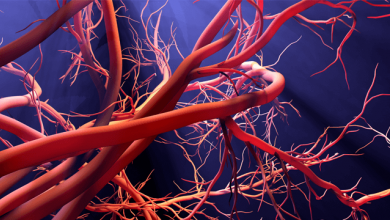Search results
Author(s):
Mai Tone Lønnebakken
,
Eva Gerdts
Added:
3 years ago
Coronary artery disease (CAD) remains a diagnostic challenge, even though there are several diagnostic techniques available for the detection of ischaemia – assessed either as function or perfusion abnormalities or directly by demonstrating anatomical coronary stenoses.1 An overview of different non-invasive modalities used in the diagnosis of myocardial ischaemia and their average sensitivity…
View more
Author(s):
Roxy Senior
Added:
3 years ago
Introduction
In the UK there is still an emphasis on coronary anatomy as currently assessed using coronary angiography; however, high-grade coronary lesion may not cause myocardial ischaemia, for example in the presence of extensive collateral vessels. Dynamic imaging to show the physiological effect of any coronary stenosis is therefore an important part of the investigation of patients with…
View more
Author(s):
Ian G Burwash
Added:
3 years ago
Aortic stenosis (AS) is a progressive disease of worsening left ventricular outflow obstruction. In the early stage of the disease, the prognosis is excellent with a very small risk of sudden death (<1 % per year).1–3 However, the development of a haemodynamically severe stenosis and the onset of symptoms herald a dramatic deterioration in prognosis. At this point, aortic valve replacement …
View more
Author(s):
Haider Aldiwani
,
Suzan Mahdai
,
Ghaith Alhatemi
,
et al
Added:
2 years ago
Justin E Davies
Author
Author(s):
Reginald Liew
Added:
3 years ago
Sudden cardiac death (SCD) can be defined as unexpected death that occurs within one hour of the onset of symptoms or during sleep in a person who was previously stable. The mode of death, which may be due to an arrhythmic or non-arrhythmic cause, depends on the underlying cardiovascular abnormality (mechanical or electrical substrate). SCD remains a major public health problem worldwide and is…
View more
Author(s):
Benoy Nalin Shah
,
Roxy Senior
Added:
3 years ago
Myocardial revascularisation can improve or relieve angina pectoris in symptomatic patients and also improve prognosis in patients with severe left main stem disease, severe proximal left anterior descending (LAD) coronary disease or multi-vessel coronary artery disease (CAD).1–2 However, it is also widely accepted that the visual estimation of stenosis severity at the time of cardiac…
View more
Author(s):
Florim Cuculi
,
Michel Zuber
,
Paul Erne
Added:
3 years ago
The introduction of tissue Doppler imaging (TDI) strain was a great achievement in echocardiography and for the first time allowed true quantification of regional myocardial function. The central problem with this technique was the angle dependence and the unfavourable signal-to-noise ratio, which has been partially overcome with 2D speckle tracking. Figures 1 and 2 demonstrate application of…
View more
Author(s):
WY Wandy Chan
,
Richard W Troughton
Added:
3 years ago
Acute coronary syndromes (ACS) and acute pulmonary embolism (APE) are leading causes of hospital admission and mortality. Accurate risk stratification is important for both conditions to guide management and the use of therapies that lead to improved outcomes.
Acute Coronary Syndromes
Despite a steady decline in developed countries, ischaemic heart disease is still the leading cause of death…
View more
Author(s):
Otto Kamp
,
Gabriel Valocik
Added:
3 years ago
Background
Echocardiography has evolved into the most predominant diagnostic imaging technique in cardiology. Over the last five decades the diagnostic capability of echocardiography has increased dramatically from M-mode to two-dimensional (2-D) imaging. Recent advances in ultrasound instrumentation and computer technology have led to three-dimensional (3-D) echocardiography, introducing a new…
View more











 « First
« First